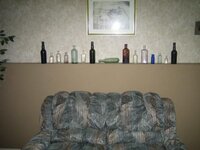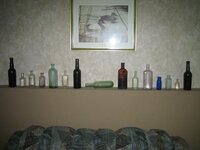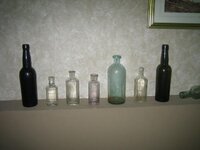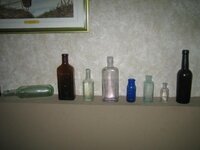Bent-Twig
Sr. Member
Hey Folks ,
This is my first post here in the bottles section. I post in the Native American Artifacts section. Yesterday morning I went out for a squirrel hunt in my favorite woods. I have been hunting this woods for 23 years since I was 14 years old. The owner cleared out a swampy section to try and make a food plot for bow hunting over. In the process he stirred up a bottle dump. I have never been a bottle collector, but I sure do see the appeal that they have. I brought a bunch home and spent more time cleaning them than I spend cleaning my Harley. I set them up in my mud room and I like them. Now I already have too many hobbies and here comes another one creeping in.
Happy Huntin' ,Bent-Twig.
This is my first post here in the bottles section. I post in the Native American Artifacts section. Yesterday morning I went out for a squirrel hunt in my favorite woods. I have been hunting this woods for 23 years since I was 14 years old. The owner cleared out a swampy section to try and make a food plot for bow hunting over. In the process he stirred up a bottle dump. I have never been a bottle collector, but I sure do see the appeal that they have. I brought a bunch home and spent more time cleaning them than I spend cleaning my Harley. I set them up in my mud room and I like them. Now I already have too many hobbies and here comes another one creeping in.
Happy Huntin' ,Bent-Twig.









